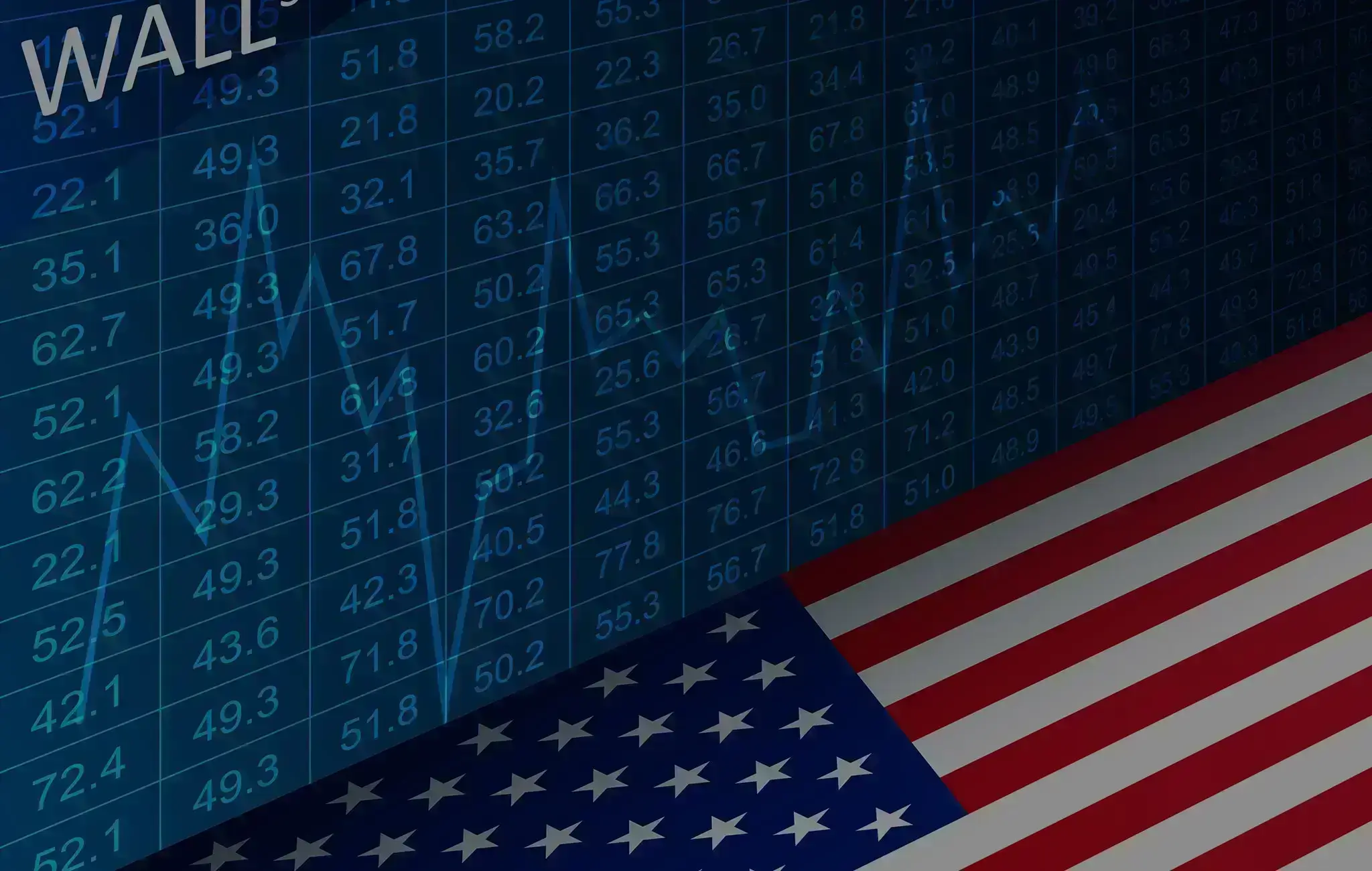What is a Trade War?
A trade war is when one country raises its tariffs on imports, in retaliation the affected country will also do the same as a way of protectionism. This then tends to escalate causing a reduction in trade between the two countries and lower economic growth forboth.
How has the Trade War affected the Market?
Currency devaluation is commonly associated with trade wars. As a way of releasing the pressure on the export sector, the country involved will normally devalue their domestic currencies. In the midst of a tariff war between China and the US, the People’s Bank of China set the reference rate for CNY, to 6.7671 CNY against USD. This was a 0.9% reduction from previous levels.
Trump took to Twitter instantly and expressed his views:
![]() Donald J. Trump
Donald J. Trump
@realDonaldTrump
“China, the E.U. and others have been manipulating their currencies and interest rates lower,while the U.S is raising rates and the USD gets stronger – taking away our big competitive. As usual, not a level playing field.”
The USD Index dropped to more than 1% as a result of this tweet. Both CNY and the USD were impacted negatively. Regardless of Bullish or Bearish markets, the USD could be impacted in various ways which include:
FED Policy: The USD value also relies heavily on the decision made by the FED. Increasing the fund rate will limit inflationary pressures and therefore promotes monetary strength.
Periodic Volatility: The announcements of new tariffs will inevitably cause short term volatility to the USD, as will the enactment of existing ones.
Chances of Devaluation: This is unlikely but the USD could be devalued as a strategy to boost economic growth.
Markets to Watch during The Trade War
Global markets have experienced volatility as a response to the trade war. The implications of the trade war not only affects a number of companies but it will also have an impact on consumers. Outlined below are the key markets to watch as the situation around the trade war heightens. As of May 7, 2019, analysts are concerned that the Trump administration could unleash higher tariffs by the end of the week, causing tensions to continue heightening.
Indices
Indices such as the Dow Jones, S&P 500 and Nasdaq 100 have already faced a sharp plumet in the markets. Not only will the US indexes be affected but the trade war could also hit the global markets and in turn affect the DAX or the FTSE 100. Tuesday 7 May 2019 stocks plummeted and bonds rose in a safety trade. The Dow Jones fell more than 473, the S&P 500 was off 48 points, according to reports from CNBC. The Europe-wide Stoxx 600 index also dropped by 0.4%, this has reached its lowest level since April 1, 2019. Even the London Stock Exchange faces a drastic drop, the FTSE 100 lost 28 points and as of May 9, 2019, it is trading at its lowest level since March which is 7,230.
Stocks
Business in the US will certainly feel a hit from the trade war tensions. Sectors which may be impacted include manufacturing, agriculture, the American auto industry, and the retail industry. One of the reasons for these industries facing a drastic hit is because of their reliance on the global supply chain. We could potentially see rising input costs and supply limitations due to rising tariffs. Not only will the American market face the consequences of Trump’s decision to raise tariffs but China’s economy will be sure to suffer as well.
Commodities
Supply and demand has been impacted due to the trade wars therefore there will be a change in the commodities markets between the world’s largest economies. Trump threatened further actions to tariffs on March 6, 2019, as a result of this crude oil dropped by 2% in the commodities market.
Forex
The US dollar is continuously fluctuating against the other global currencies creating uncertainty in the forex market. The currencies likely to be affected include the Mexican peso, Canadian dollar, and safe-haven currencies such as the Japanese yen.
Trump’s Trade War
President Donald Trump introduced a 25% tariff on steel imports as well as a 10% tariff on aluminium. This was announced on March 8, 2018. As a result, global stock markets plummeted in anticipated fear of a trade war. Prior to Trump’s presidency, the only body that had the power to impose tariffs was the US Congress. As Trump wanted to impose new tariffs on China, he used something called the National Emergencies Act.
This act was intended for the president, allowing them to have special powers in a national crisis, therefore overruling the
Congress. Trump used this and stated that the US depended on imported metals, which threatened the country’s ability to make weapons.
As a result of this, eight countries filed in complaints to the World Trade Organisation (WTO) due to the fact that America is the world’s largest steel importer. Prices were raised and it especially hit automakers quite hard. In order to get around this, prices were then raised for consumers.
The exemption of South Korea
March 26, 2018, appeared to be a turning point. Trump decided to exempt South Korea from the steel tariff. However, in return, this meant South Korea would have to amend the Bilateral Agreement from 2012. At the time the US’s tariff of 25% on pickup trucks would have expired in 2021, but amending the agreement meant that there was an extension of ten years on the tariff. Australia, Argentina, and Brazil were also exempt from the steel tariffs.
What followed was global retaliation. Following a G7 meeting, Justin Trudeau the Canadian Prime Minister decided that Canada would also raise its tariffs. Mexico was the next country to announce tariffs on US industries that supported Trump.
Turkish Lira in an all-time low against the USD
On August 10, 2018, Trump decided to double tariffs on aluminium and steel imports from Turkey. His reason behind this was Turkey’s imprisonment of American pastor Andrew Brunson. The Turkish Lira plummeted against the US dollar, raising fears of a financial crisis within the Eurozone.
The US and China Trade War Timeline
The China-US trade war led to the commodities sector being hit drastically. Tariffs had been put onto materials which reduced trade between the two giant economies. Traders feared an economic slowdown. These two factors working hand in hand meant that raw materials faced a drag, especially since demand for commodities started to slacken.
When exports are less than imports it is known as a trade deficit. Addressing this was a huge priority for Trump when he was elected. Whilst this was Trump’s vision, in the East there was were other ideas forming. President XiJinping was elected and his ideologies centred around making China the biggest economy in the world, pushing towards technology rather than manufacturing cheap goods for Western companies. The first action Trump took was to withdraw the U.S. from the Trans-Pacific Partnership, followed by an investigation into trade deficits with China.
January 22nd, 2018
President Trump imposed tariffs and quotas on imported Chinese solar panels and washing machines. From here tensions arose and the situation escalated forming a pressured timeline of events.
China filed a complaint with the WTO in August 2018. What followed the US’s decision in January was a back-and-forth of increasing tariffs. The Trump administration announced in March 2018, that it would levy tariffs on $60 billion of imports from China. They also said U.S technology transfers to Chinese companies would be limited. China hit back by announcing tariffs on $3 billion in U.S. fruit, pork, recycled aluminium, and steel pipes.
March 26th, 2018
Chinese trade officials and the Trump administration started negotiating. The Trump Administration made three requests:
China needs to reduce its tariffs on U.S. automobiles
China should import more U.S. semiconductors
American companies should be granted more access to China’s financial sector
April 3rd, 2018
The administration announced the possibility of raising tariffs on $50 billion in Chinese imported electronics, machinery, and aerospace. Within hours China responded by raising its tariffs to 25% on $50 billion of U.S. exports to China. The tariffs targeted 106 American products. Penalties were also placed on the Sorghum and Boeing aeroplanes. The main industries targeted by China were ones who supported Trump in the 2016 election.
Soybean imports are vital to China for food production. Prior to the tariff war, China imported $12 billion in soybeans. In March 2018 this all changed, China made the decision to cancel the existing contract with the U.S., the reason being it would affect U.S. markets more than it would damage China’s. Over a period of 55 days, soybean futures declined by approximately 23%.
April 6th, 2018
$100 billion more of Chinese imports were about to be affected when Trump declared tariffs.
April 10th, 2018
Trade negotiations had started to deteriorate according to China. The ‘Made in China 2025’ plan meant China was subsidising its 10 prioritised industries and the U.S. didn’t like this, what followed was a demand for China to stop subsidising. The industries included robotics, aerospace, and software.
May 4th, 2018
Five demands were made to China from the Trump Administration:
End subsidies to tech companies
China should stop stealing U.S. intellectual property
Tariffs on U.S. good needs to be cut by 2020
Opening China’s markets to more U.S. investments
The need to reduce the trade deficit by $200 billion by 2020
China agreed to import more U.S. products on May 10, 2018. Then on the 15th May 2018, China agreed to remove the tariffs on U.S. pork imports, and deals were exchanged regarding telecoms. China allowed Qualcomm to acquire NXP, and in return, the U.S. removed the tariff on ZTE, a Chinese telecom company.
May 29th, 2018
The Trump Administration said it would announce a list of products set to receive a tariff by June 15, 2018. Firstly it planned to target $50 billion in imports from China, this would be done by June 30, 2018.
July 6th, 2018
Tariffs made by the administration went into effect for $34 billion of Chinese imports. China levied a 40% tariff on U.S. autos. As well as autos they decided to levy tariffs on U.S agricultural exports as well. This left U.S farmers with more produce than they accounted for, to appease them Trump offered $12 billion in subsidies.
July 10th, 2018
A 10% tariff on another $200 billion of Chinese imports was announced as a possibility by the Trump Administration. This went into effect on the 10th of September. There were also threats placed to increase tariffs by 25% after the 1st of January, 2019, on a variety of goods such as luggage, handbags, fish, apparel, etc. China returned with a threat to add tariffs on $60 billion in U.S. exports. The ball was thrown back to the U.S. and Trump returned with a threat to add tariffs to all $500 billion of Chinese imports. If this was to come into effect it would have dire consequences as economic growth would reduce by 0.75 points in 2018.
August 23rd, 2018
A 25% tariff on $16 billion worth of Chinese goods came into effect. This applied to industrial equipment such as tractors, plastic tubes, and chemicals. China also implemented a 25% tariff on $16 billion worth of U.S goods which included autos and coals.
December 1st, 2018
President Trump and President Xi Jinping met at the G-20 Conference, through talks Trump agreed to hold off any tariff increases scheduled for January 2019. Instead, the Trump Administration will cover 142 issues in a negotiated agreement.
Initially, negotiators had a deadline of March 1, 2019, before Trump would move forward with the scheduled tariff increases. However, on February 27, 2019, the administration announced that it had decided to drop any threats of imposing the tariff.


